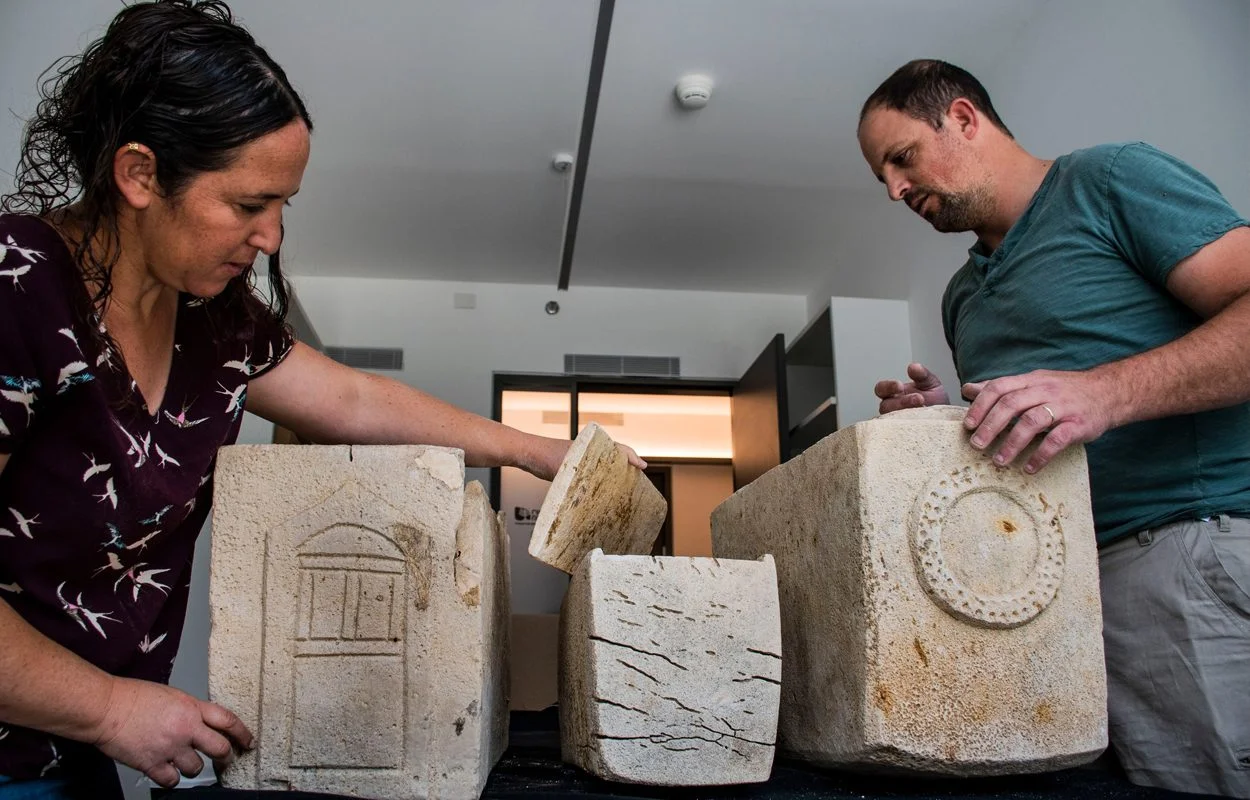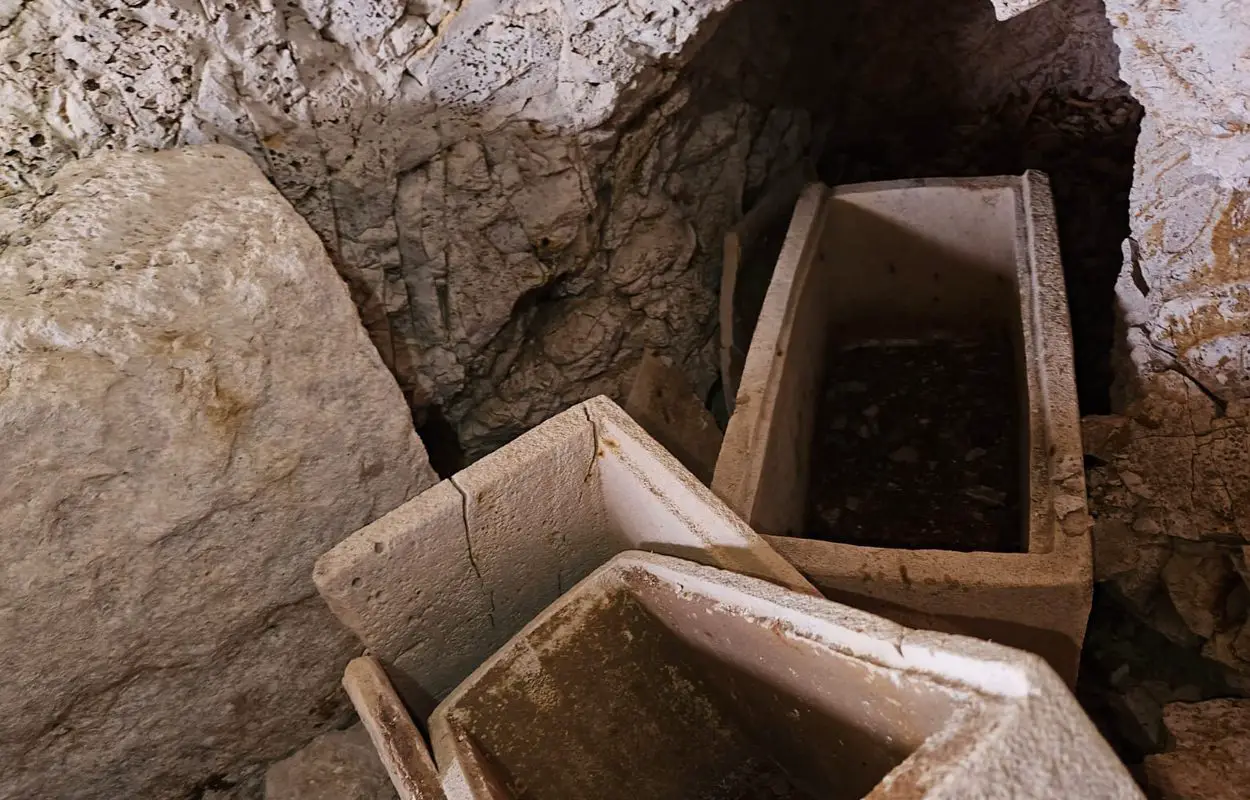A joint operation to prevent the looting of antiquities by the Kafr Kanna Police and the Israel Antiquities Authority Theft Prevention Unit has led to the discovery of a burial caves near Kafr Kanna in Galilee, Israel.
The team investigated a plot near the village of Mashhad where they recovered stone ossuary’s (small burials chests) and found a burial cave from the Roman period that was entirely destroyed by large scale construction works.
Upon further inspection of the site, the removal of earth revealed a second rock-hewn burial cave with niches and decorated stone ossuary’s, although the cave has also been partially damaged by the construction works. The ossuary’s were found empty and moved from their original location, suggesting that the cave had recently been looted.
The ossuary’s are small rectangular chests carved in soft limestone that were used for the secondary burial of human bones after the body tissue decayed. The custom of secondary burial in stone ossuary’s was a Jewish practice carried out in Judea and the Galilee area in the Early Roman period from around the first century BC.

A closer inspection of one of the ossuary’s shows an inscription depicting a mausoleum in Greek or a “nefesh” in Hebrew. Another ossuary is carved with a circular wreath in which holes were drilled, thought by some to symbolise the victory of the deceased over death.
All construction work has been stopped and several workers have been summoned to the local police station on suspicion of damaging antiquities and failing to report the discovery to authorities.
In Israel, there is a legal obligation to report chance finds of antiquities to the Israel Antiquities Authority, and damaging antiquities is a criminal offense punishable by up to five years imprisonment.
According to Amir Ganor, Director of the Theft Prevention Unit at the Israel Antiquities Authority: “The original details of the destroyed cave cannot be reconstructed, and almost two-thousand-year-old cultural assets are lost forever. Thanks to the vigilance and determination of the Kafr Kanna Police, and the successful cooperation with the Israel Antiquities Authority, one of the caves was mostly saved.”
Header Image Credit : Yoli Schwartz, Israel Antiquities Authority







